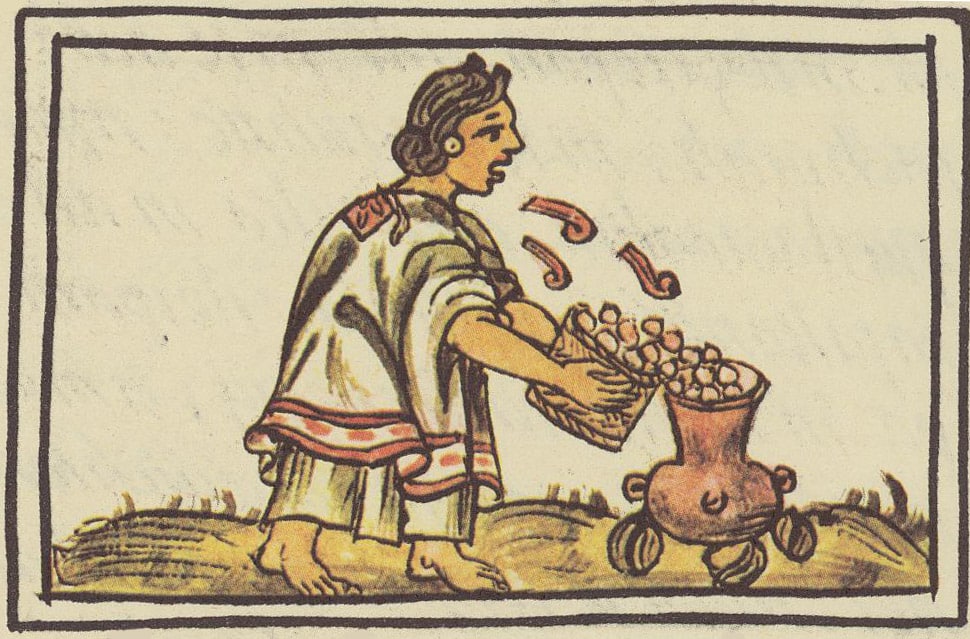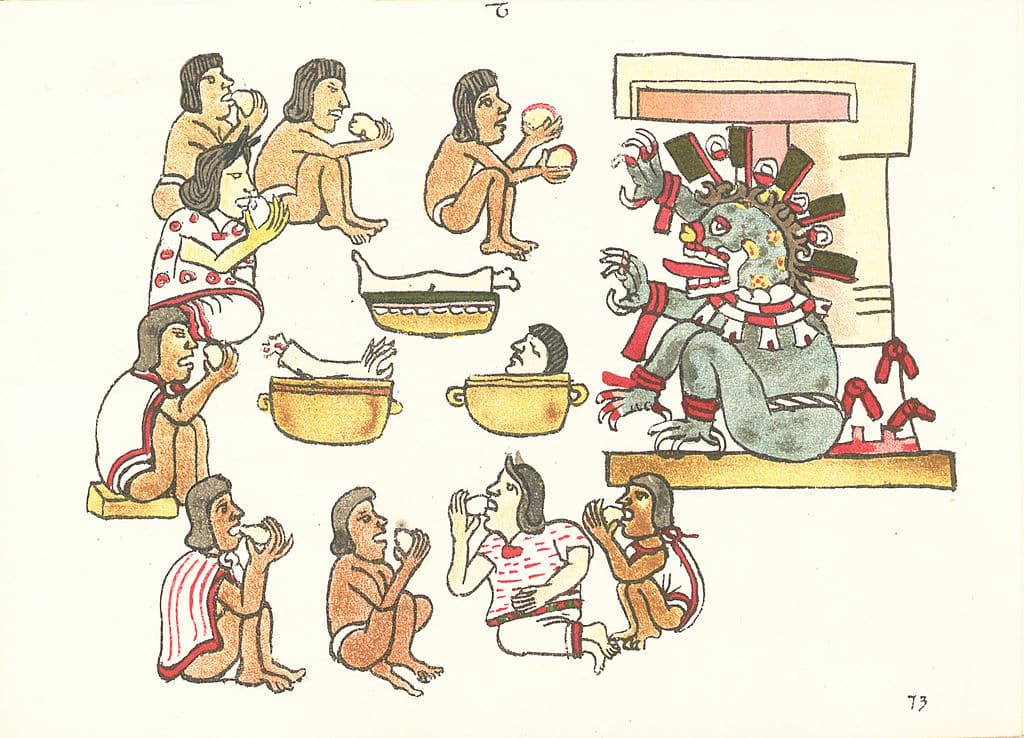Aztec food was diverse and somewhat controversial. However, it is not just about what they ate but how they ate and the celebrations where they ate.
Meals
In Aztec society, there were at least two meals with a possibility of three. The three would have been:
- Dawn
- Early Morning
- Early Afternoon
There is some debate about whether or not there was a meal in the early morning.
This is similar to the custom in contemporary Europe, but it is unclear if the intake of ātōlli, maize gruel, was considered a meal or not. Drinking a good amount of the thicker kinds of ātōlli could equal the calories in several corn tortillas, and ātōlli was consumed on a daily basis by most of the population.
Domestic Feasts
Aztec held private/personal feasts included:
- music singing
- storytelling
- dancing
- incense burning
- flowers
- tobacco
- offerings
- gift giving
Domestic feasts were a display of material wealth and were organized to the point of ritual. There were roles and relationships displayed and reinforced. Hosts needed to meet the obligations of banqueting in order to not offend their guests, and guests needed to reinforce the host's stature. There were multiple reasons for a private banquet/feast:
- Child naming ceremonies
- Child presentation ceremonies
- Various Religious ceremonies
Public Feasts
Parts of the 260-day ritual calendar of the Aztecs were Veintena. Veintena can be approximated as "months"; however, they are more aptly described as 20-day public ceremony periods.
Each 20-day Veintena was a full and complex festival made up of ceremonies dedicated to specific gods and deities of the current Veintena. Regional and local ceremonies differed in deities and methods from the official state-sponsored ones at Tenochtitlan.
Food was an important part of Veintena ceremonies. It was both consumed and adorned by priests. It was noted that during the ceremonies honoring Xipe Totec, the priests would adorn themselves in arrays of "butterfly nets, fish banners, ear of maize, coyote heads made of amaranth seed, tortillas, thick rolls covered with a dough of amaranth seeds, toasted maize, red amaranth, and maize stalks with ears of green or tender maize."
In the ceremonies honoring Mixcoatl, after a "Great Hunt," Aztecs would feast on deer, rabbits, and all other animals captured in the hunt.
Hunting was also important in celebrations dedicated to Xiuhtecuhtli. Aztec boys and young men would hunt for ten days. The products of these hunts would then be turned over to priests, who cooked them in large fireflies.
Types of Aztec Food and Drink
The Aztecs were hunters and farmers and used a variety of spices in their cuisine.
Their staple foods included:
- maize
- beans
- squash
- chilis
- nopales
- tomatoes
- acocils

The Aztecs were typically vegetarians, but they did consume wild game and insects such as grasshoppers.
Much of what they ate is still popular today in Mexico.
Maize was the most common ingredient found in many foods.
Chocolate: The most influential spice that the Aztecs contributed was the cocoa bean, which we know as chocolate. The cocoa bean was common to the region and was even taken back to Europe by Christopher Columbus, but did not gain much traction. However, Hernan Cortes combined chocolate with sugar and vanilla, and the rest is history.
Alcohol: Many different alcoholic beverages were made from fermented maize, honey, pineapple, cactus fruit, and other plants. However, Aztec society frowned upon the overindulgence of alcohol, and one could be publicly scorned for being an alcoholic.
Cannibalism
The Aztecs practiced ritualistic cannibalism. Victims, usually prisoners of war, were sacrificed in public on top of temples and pyramids by cutting out their hearts. The bodies were then thrown down to the ground, where they were dismembered. The pieces were then distributed to the elite, which were mostly warriors and priests. The meat was consumed in the form of stews flavored only with salt and eaten with corn tortillas but without the otherwise ubiquitous chili.

